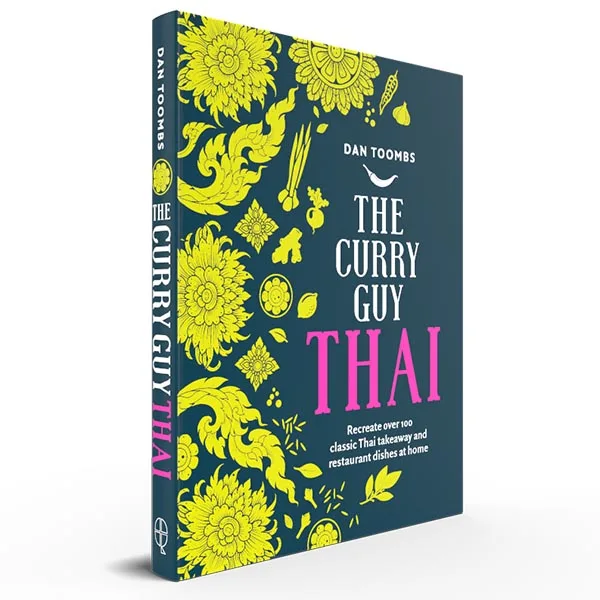Beef cooked until super tender, this Korean braised beef is amazing!
I absolutely love Korean food. Living in North Yorkshire as I do, it’s not all that easy to come by at restaurants so I need to make recipes like this delicious Korean braised beef myself. That’s not a bad thing as this homemade Korean braised beef is most definitely restaurant quality and you can made it easily at home.

About this Korean braised beef recipe
Like so many Asian recipes, the meat for stews and soups is usually brought to a boil in sufficient water for about 10 minutes. Then it’s strained and all the blood and other impurities are cleaned from the meat. I’d like to stress that this step isn’t essential but it will benefit the appearance of the final dish.
Juicy and tender Korean braised beef short ribs are amazing. They’re spicy, sweet and just a bit sticky: I simply can’t get enough of them and I hope you love this recipe and want to make it often like I do. Ask your butcher to cut the short ribs into small 5cm (2 inch) chunks. Failing that, just use larger western style cuts of beef short ribs.
Which cut of beef is best?
Look for Korean cut beef short ribs. The ribs are cut into small chunks that are perfect in this Korean braised beef stew.
I tried to get them lately but couldn’t so I used beef ribs from my local supermarket and cut the meat off the long ribs. Then I cut the meat into large pieces for the stew and threw the bones in for flavour. That worked find so if you can’t get your ribs cut Korean style, just do as I did an you will still get a Korean braised beef stew that is out of this world delicious.
Working ahead…
If you are interested in working ahead, you could prepare and cook this Korean braised beef stew a day or two ahead of cooking.
It keeps well in the fridge and actually gets better from sitting a couple of days. Then all you need to do is heat it up and serve.
Can this Korean braised beef be frozen?
Most definitely yes! This stew freezes really well up to six months.
As it takes some time to cook, I often double the recipe and freeze what we don’t eat.
Why is the meat cooked twice?
It really isn’t though it might seem like it is. Some people think the authentic way of cooking Korean beef stock is wasteful because the first broth all goes down the sink.
It really isn’t wasteful at all! The meat and bones are brought to a rolling simmer for about 10 minutes. During that time, you skim any impurities that float to the top and then strain it all.
This helps make a clear stock which is important in Korean stews. Then the meat is washed thoroughly before cleaning your pot and bring the meat to a simmer again. Believe me… it makes a difference and you should not miss this step.
You can also serve this as a Korean beef bowl.
I served this as a stew. You could also place a scoop or two of rice into 6 bowls and add the stew to it, creating a delicious Korean beef bowl.
Other vegetables could also be added to your Korean beef bowl such as sautéd courgette, mushrooms and bean sprouts. You might also like to make Korean savoury pancakes which are a delicious addition.
How to make Korean braised beef stew…
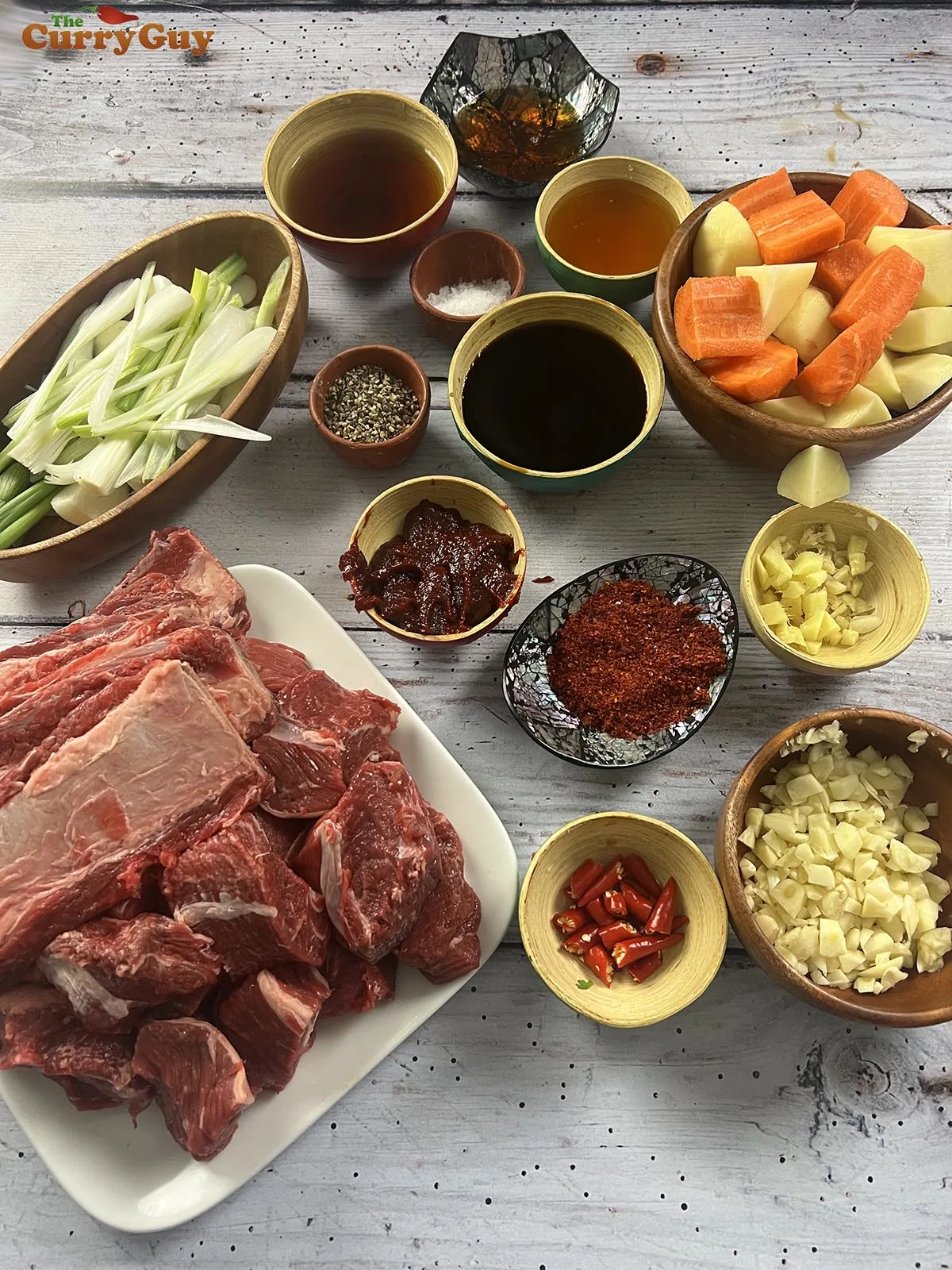
Get all of your ingredients together before you start cooking. It’s easier that way.
Step 1.
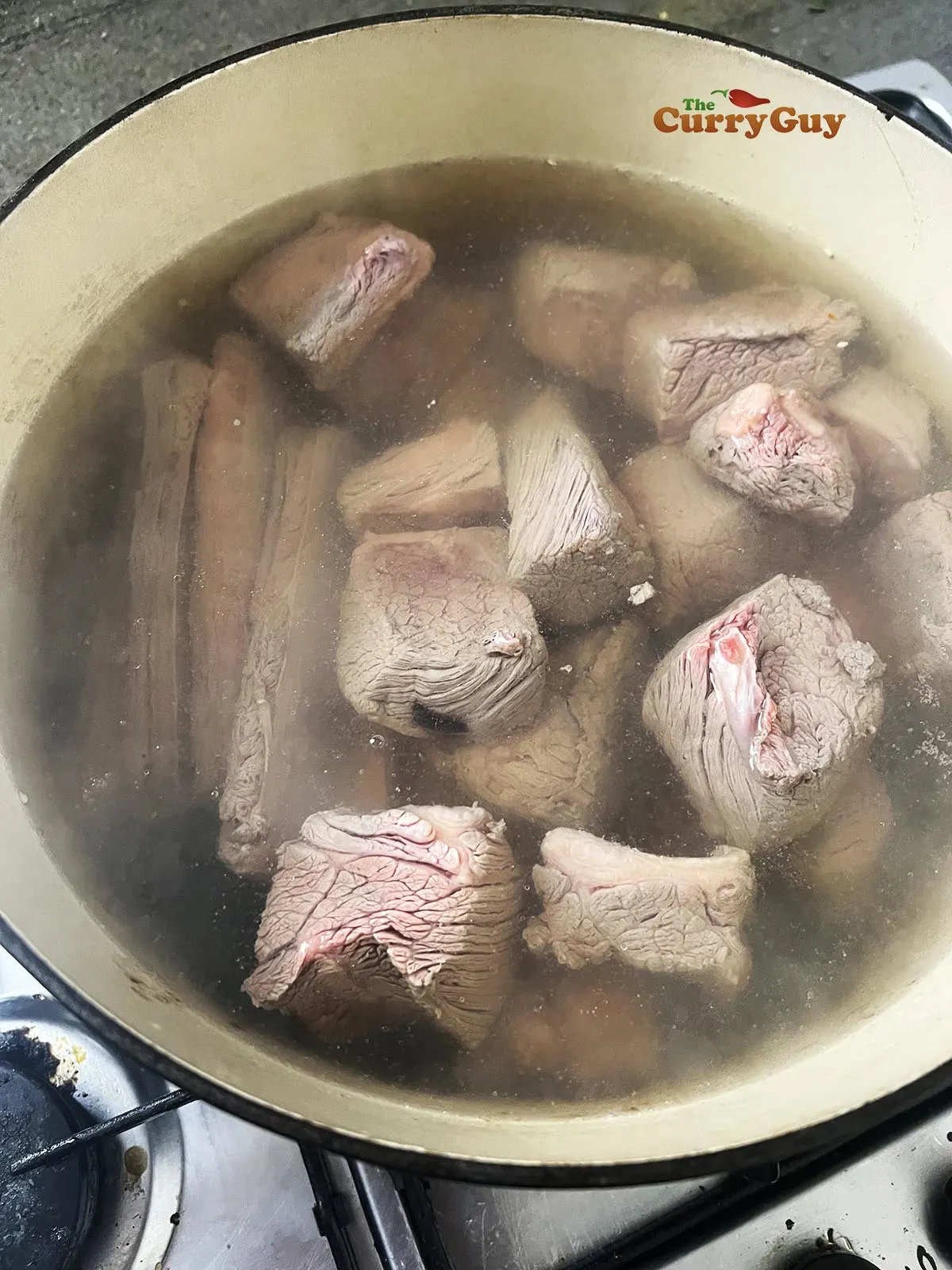
Place the beef and beef bones in a pan and cover with water. Bring to a rolling simmer.
Step 2
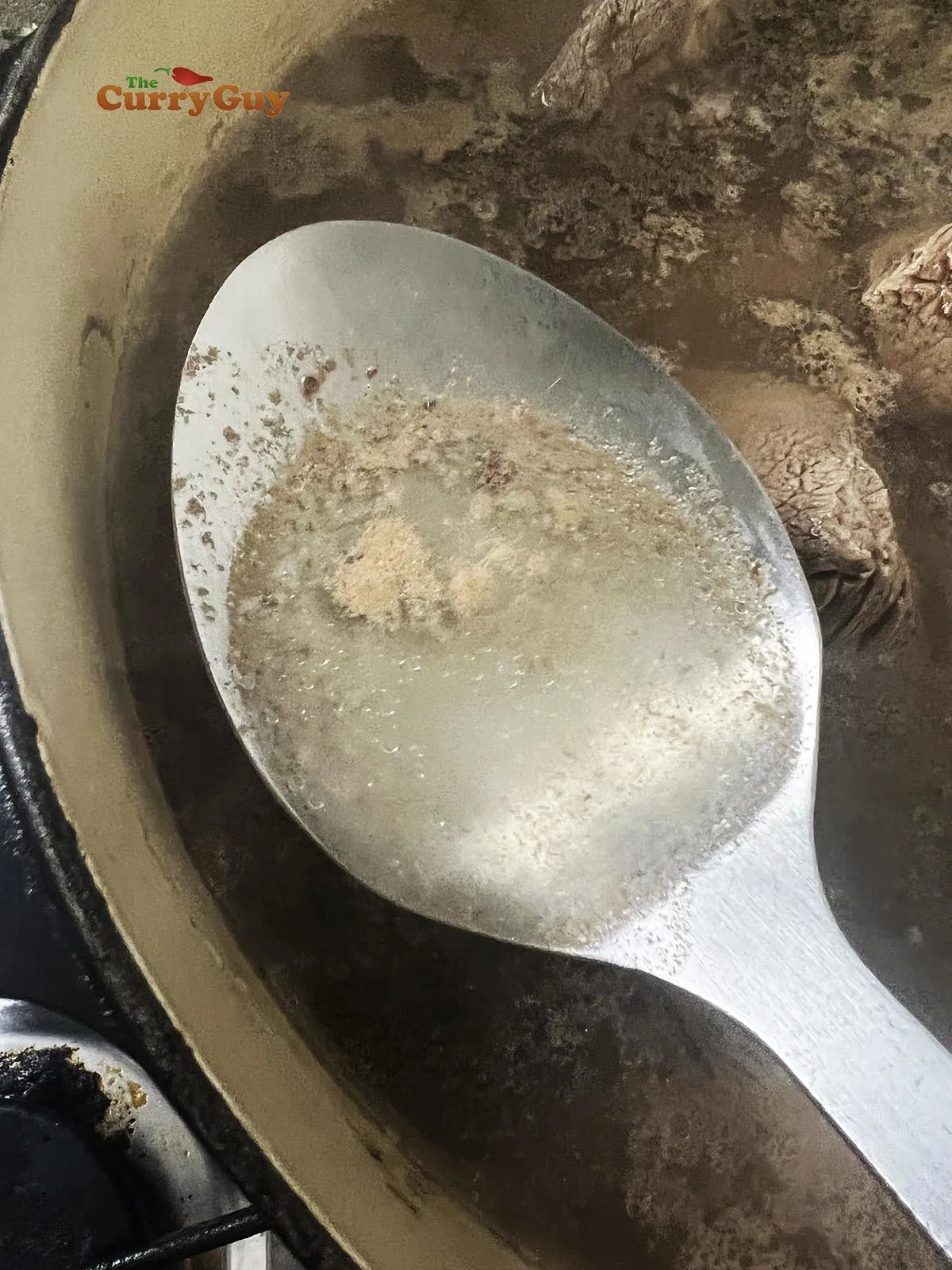
As the water simmers, foam and other impurities will rise to the top. Skim this off. Once the water comes to a rolling simmer, allow the beef and bones to simmer for 10 minutes.
Step 3.
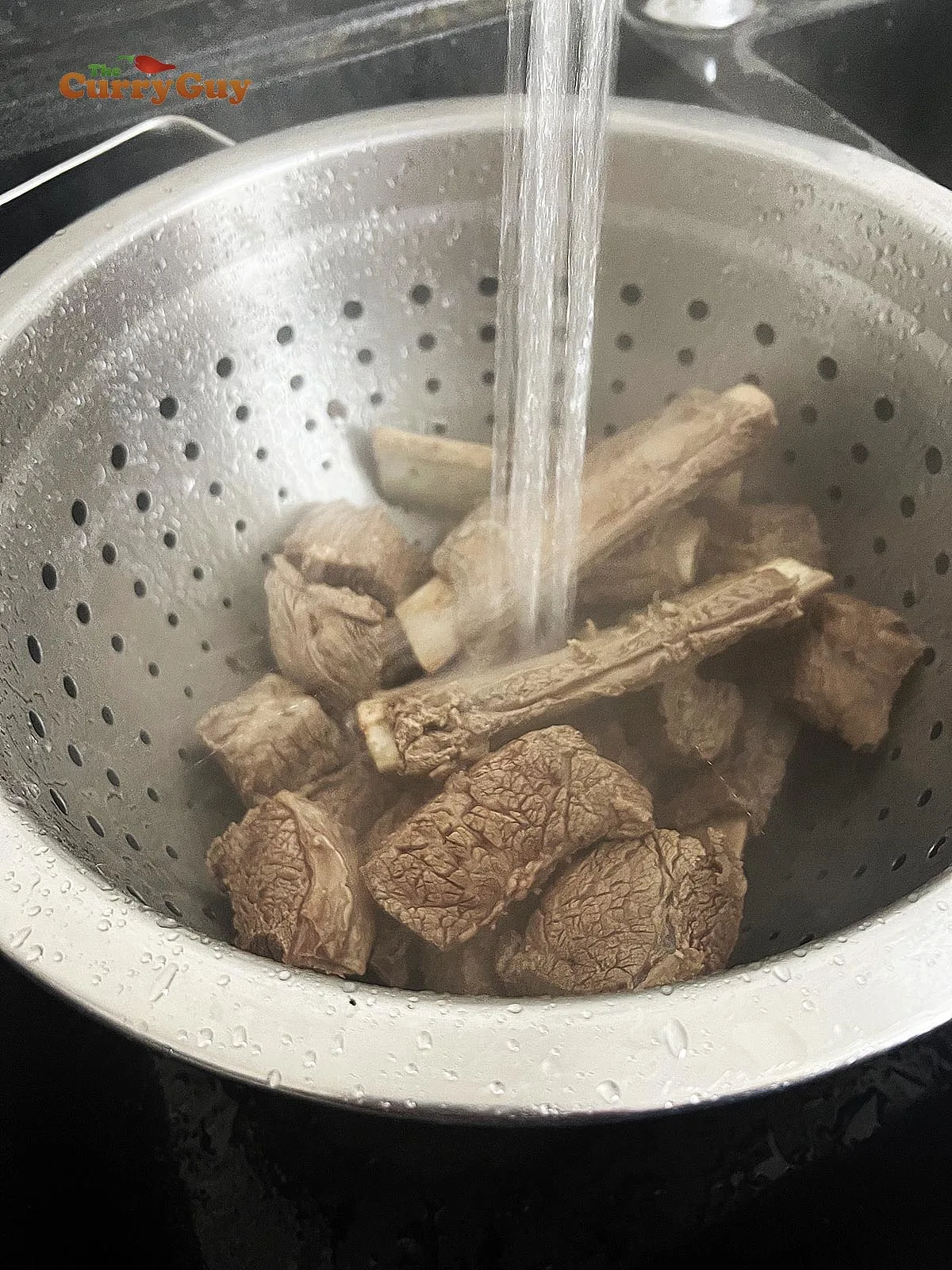
After 10 minutes of simmering, strain the beef and bones. You can discard all of the cooking water. Then wash the meat and bones, removing any blood and other impurities that are on them.
Step 4.
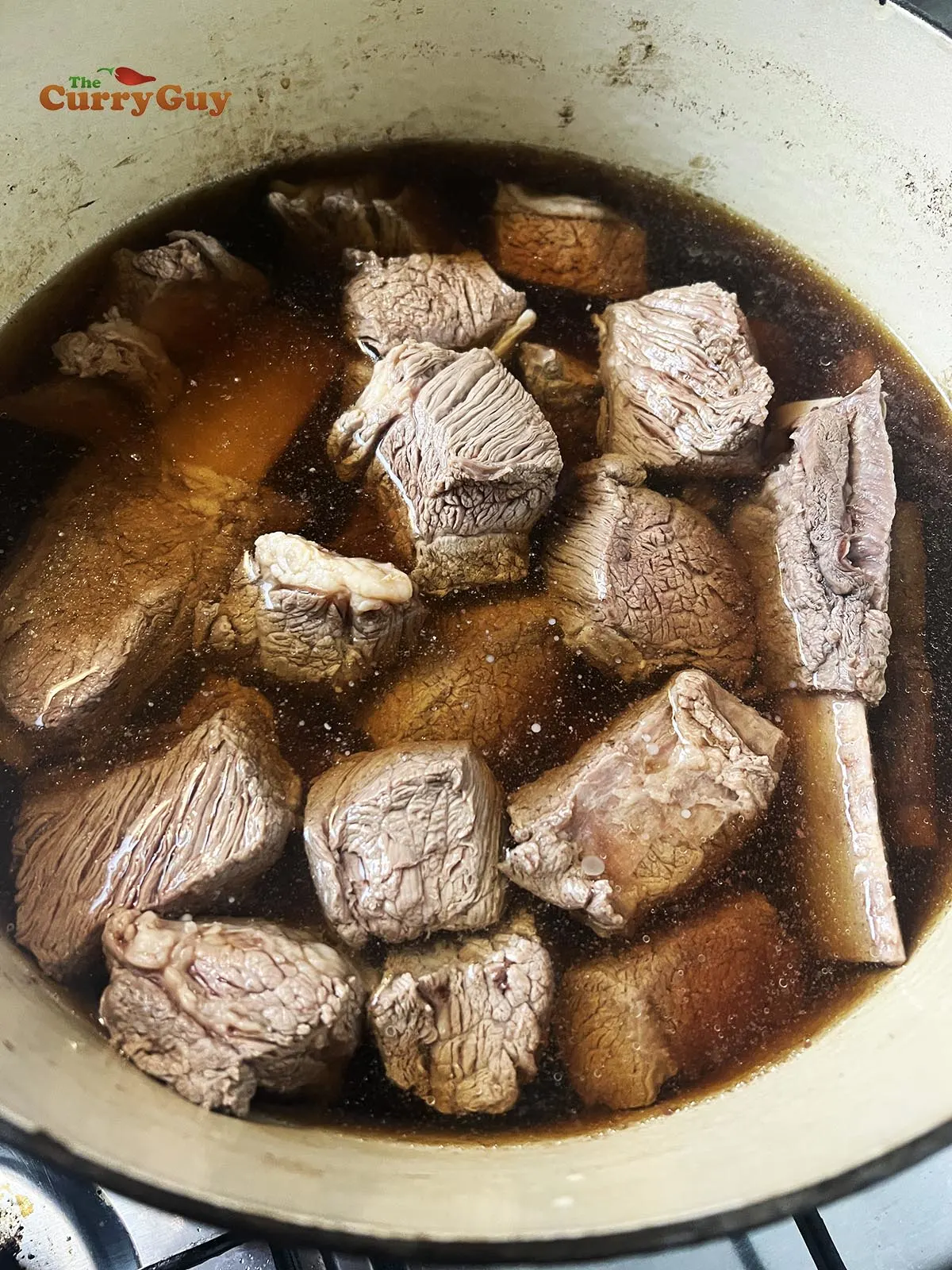
Clean your cooking pot and place the cleaned meat and bones back in it. Then cover with water and add the soy sauce, honey and Chinese rice.
Step 5 – Your work on this Korean braised beef is almost complete!
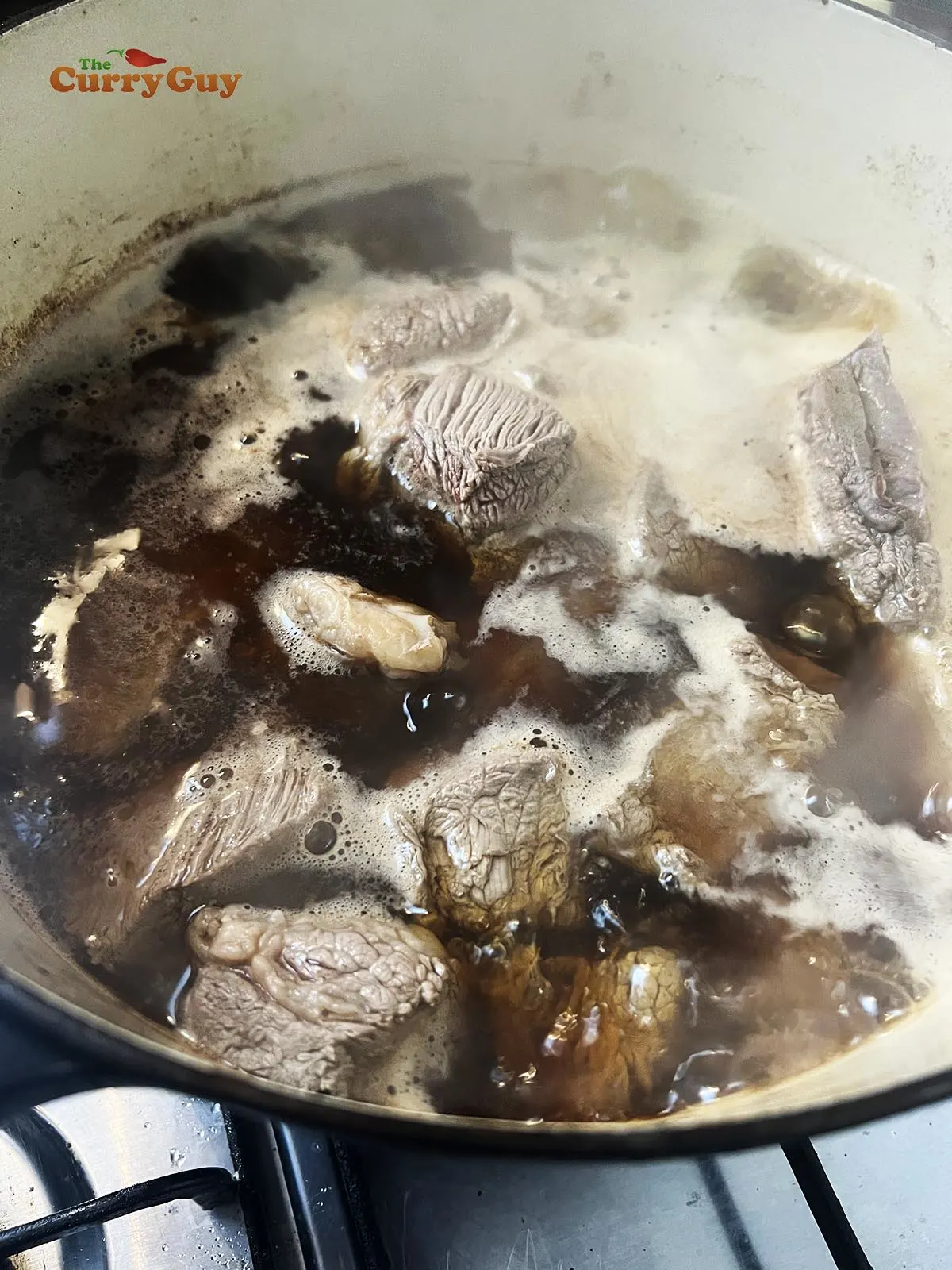
Bring to a rolling simmer and skim off any more impurities that happen to rise to the top as you do.
Step 6.
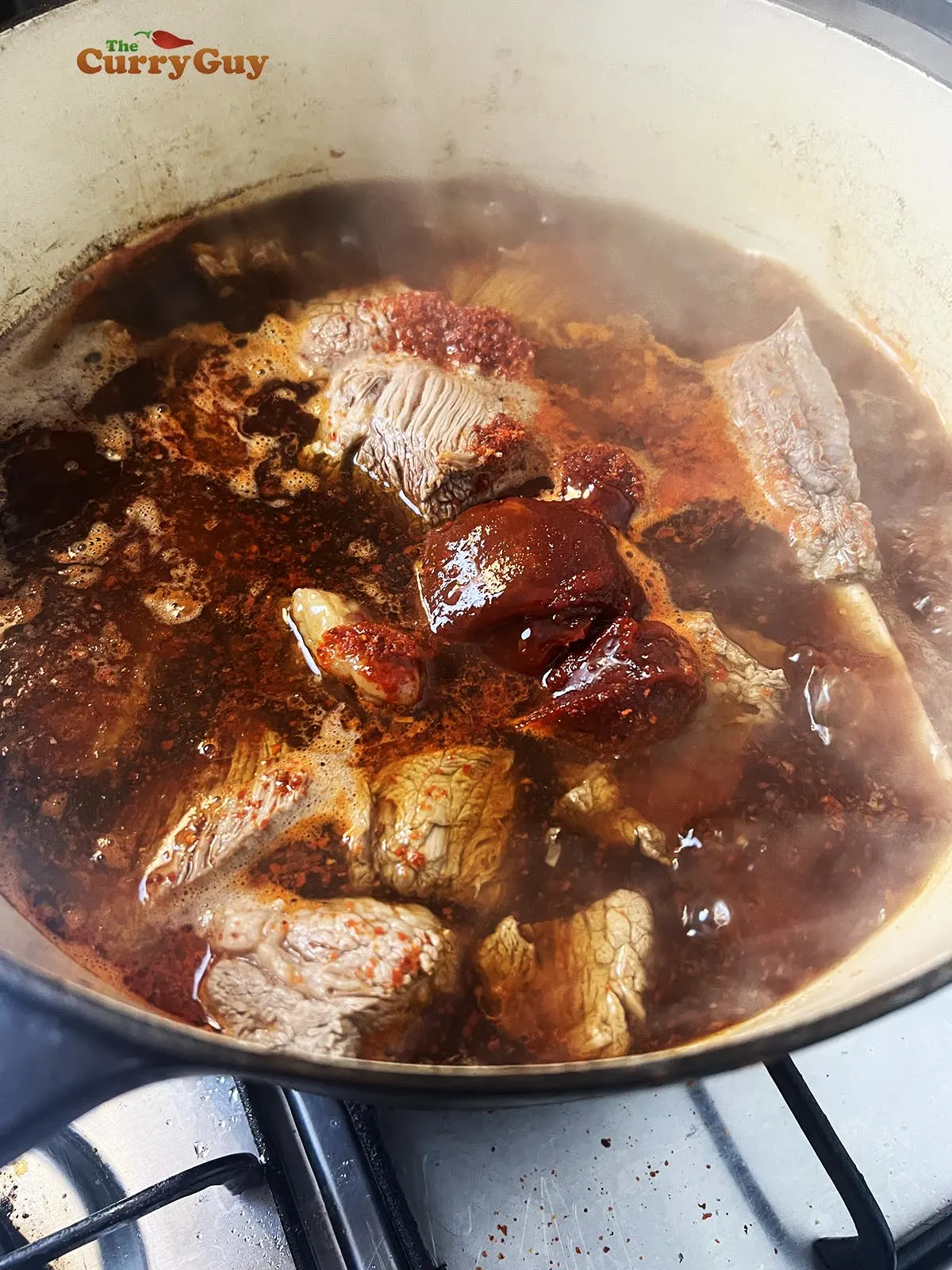
Stir in the gochujang and gochugaru and stir well to combine. Cover and simmer for 30 minutes.
Step 7.
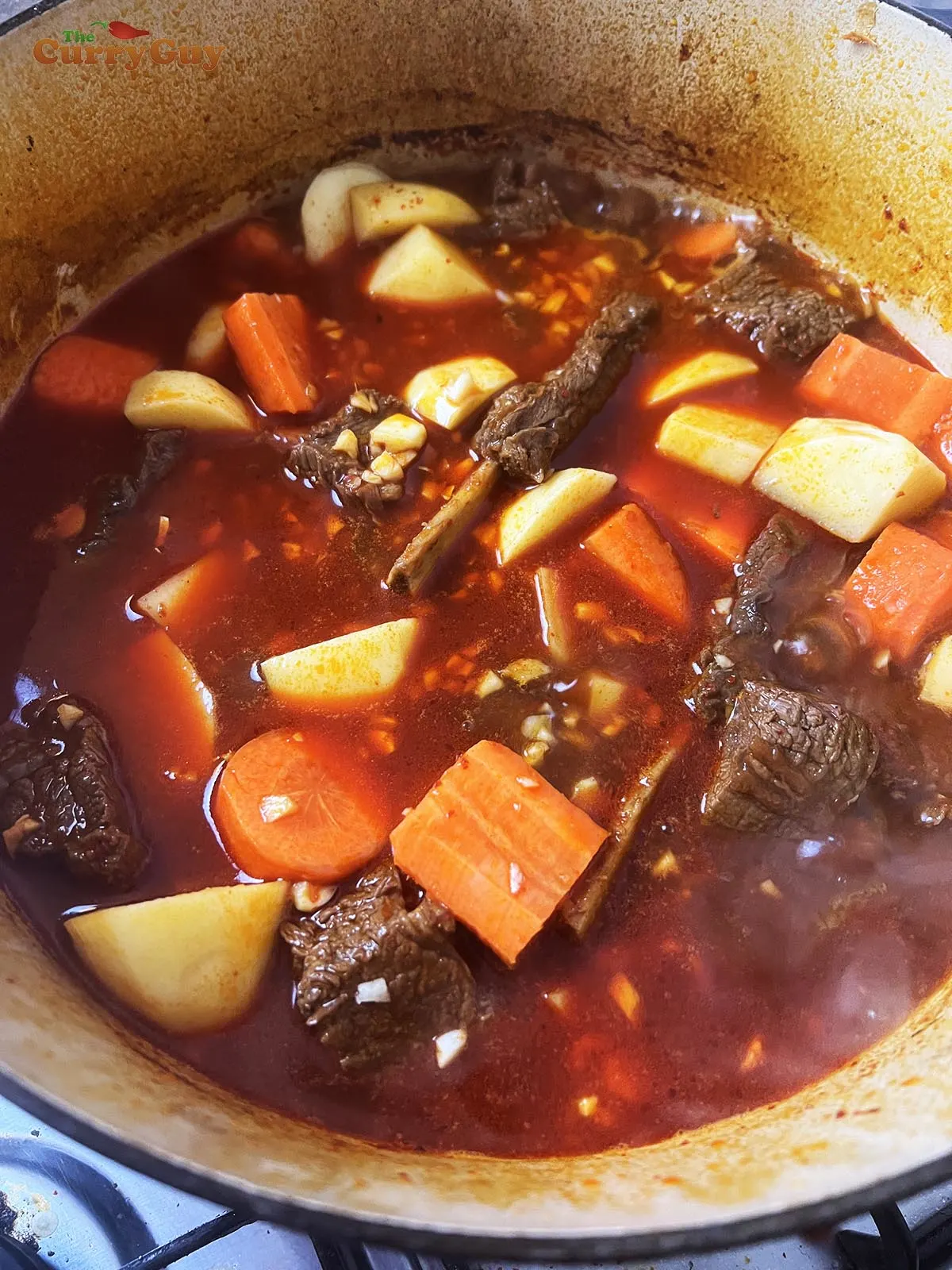
Lift the lid after 30 minutes and add the potatoes and carrots. Cook uncovered for about another 30 minutes or until the beef is super tender and the carrots and potatoes are cooked through. You can add a little water or beef stock if the pot is looking dry.
Just don’t rush things! The beef is ready when it’s tender.
Step 8.
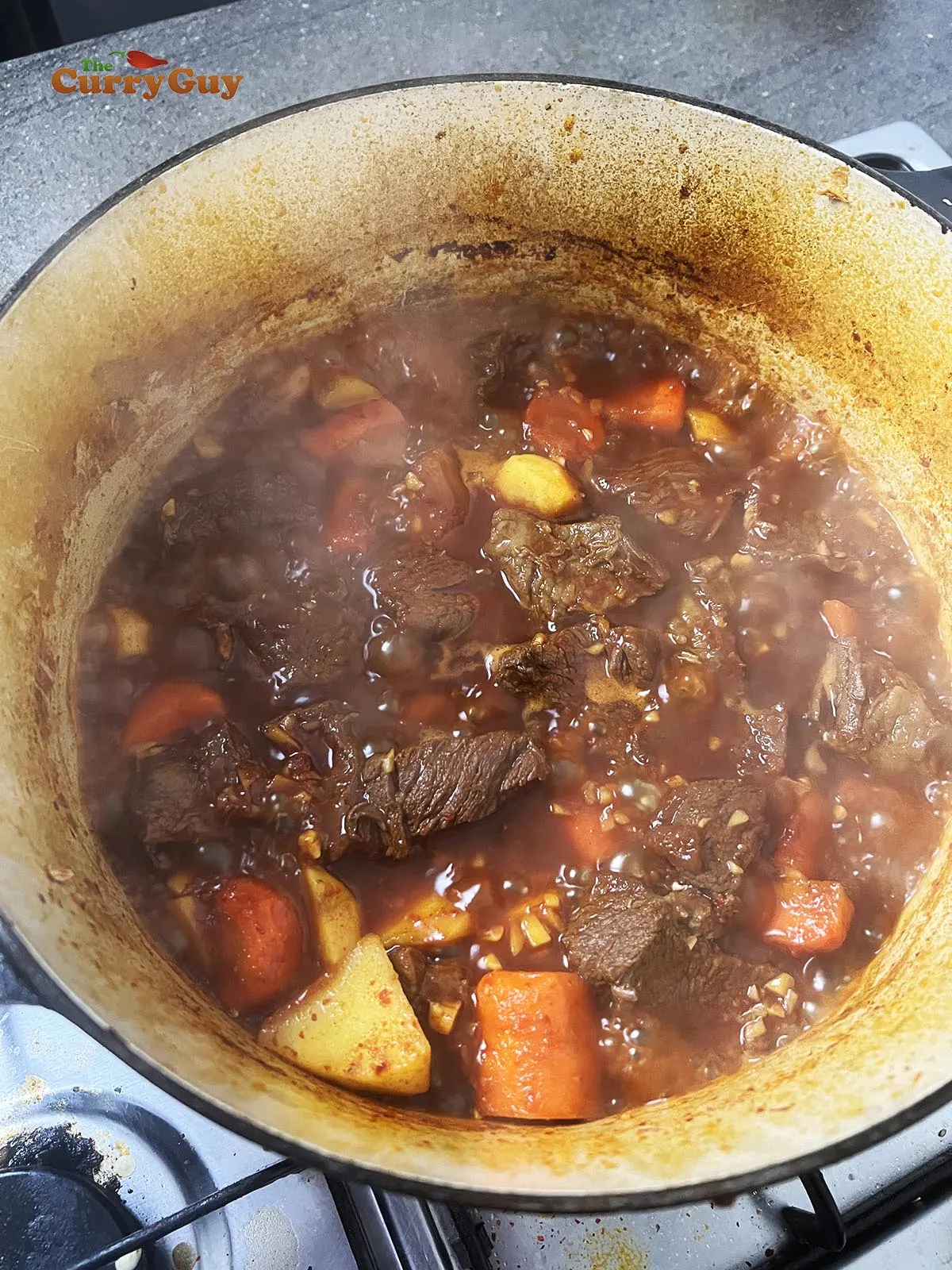
As it cooks with the lid off, your Korean beef stew will thicken and become amazingly delicious.
Step 9.
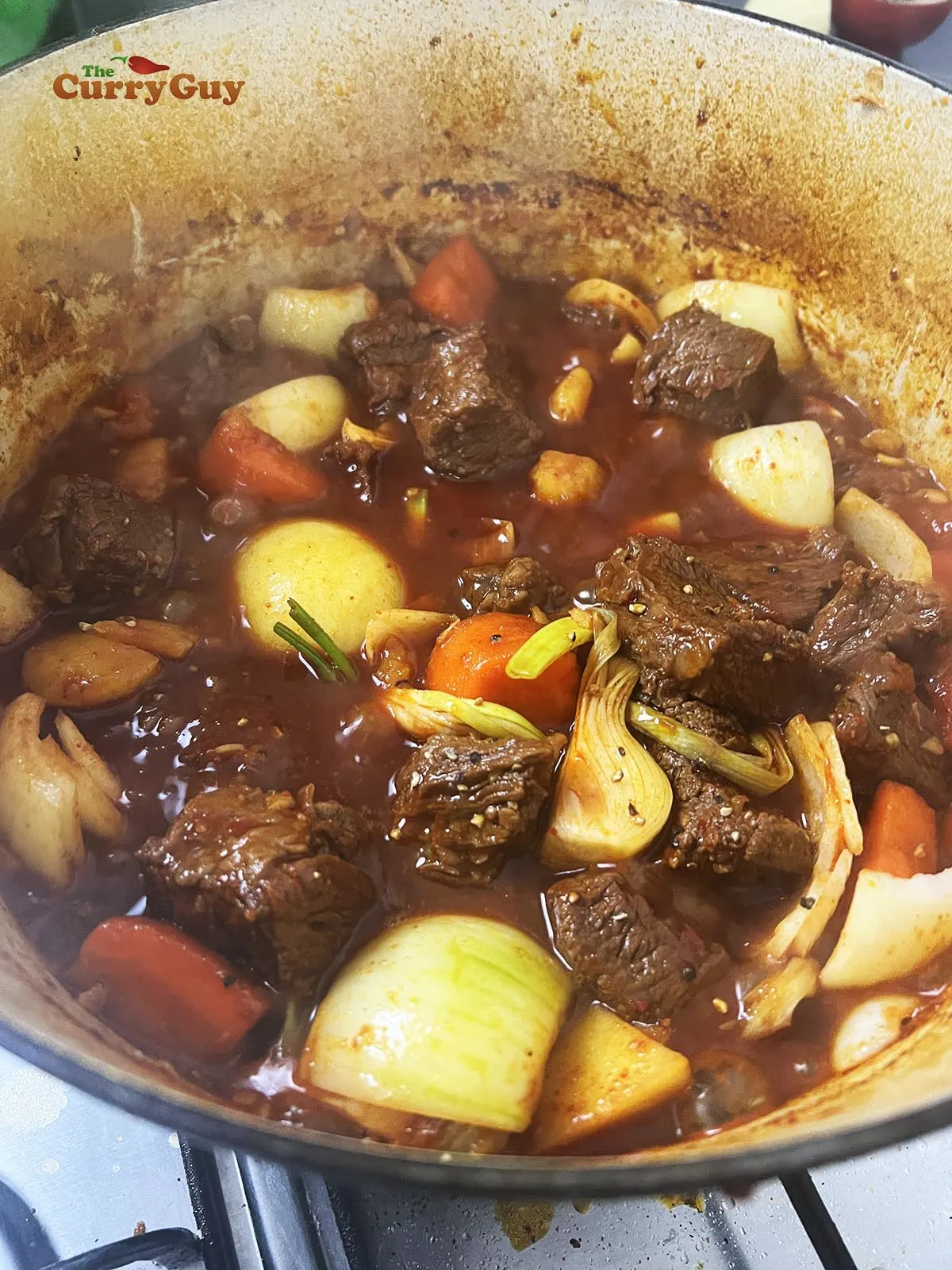
To finish, stir in the onion petals and spring onions and give them a couple of minutes to soften in the hot stew.
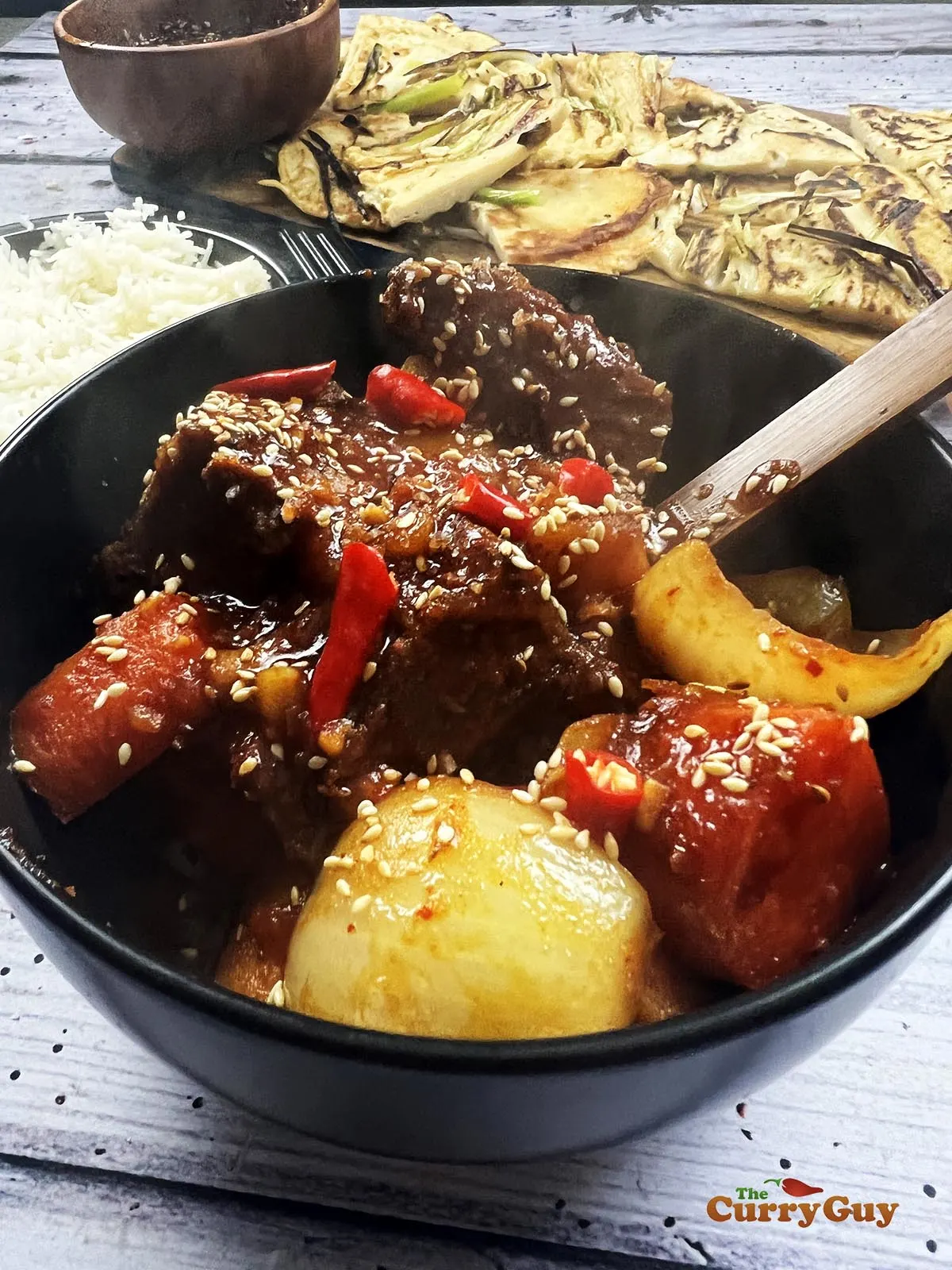
Try this Korean braised beef stew with finely chopped red chillies.
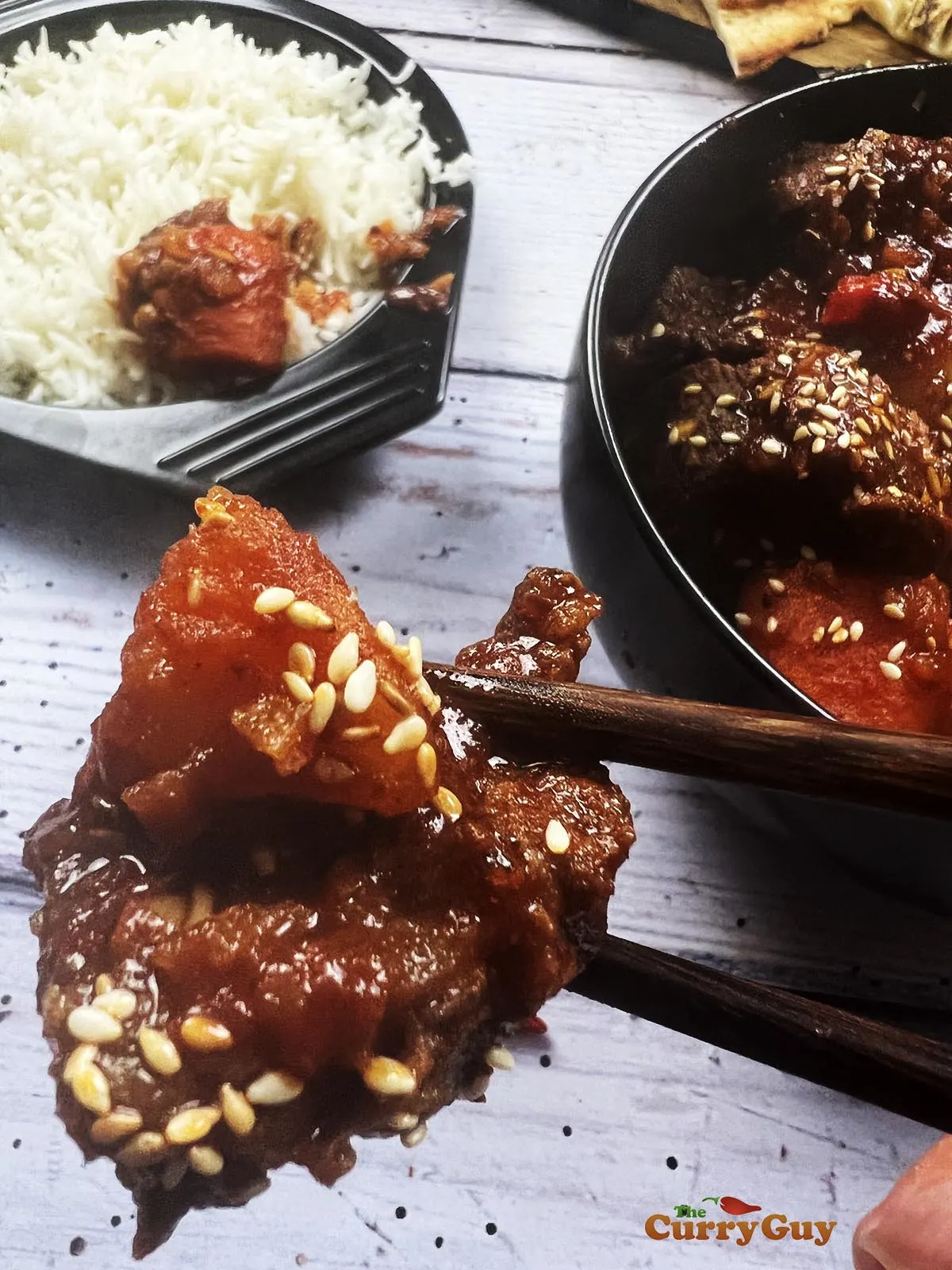
Dig in! You’re going to love this one.
Here are a few Korean main course recipes you might like to try…
Korean kimchi jjigae – A one pot masterpiece with sweet, sour and savoury flavours.
Korean baked salmon – This spicy salmon is so good rolled into Korean pancakes!
Beef Bibimbap – You can really get creative with this delicious one pot Korean beef bowl.
Korean style fried chicken – Crispy fried chicken in a sweet, sour and spicy sauce!
Korean Braised Beef Stew
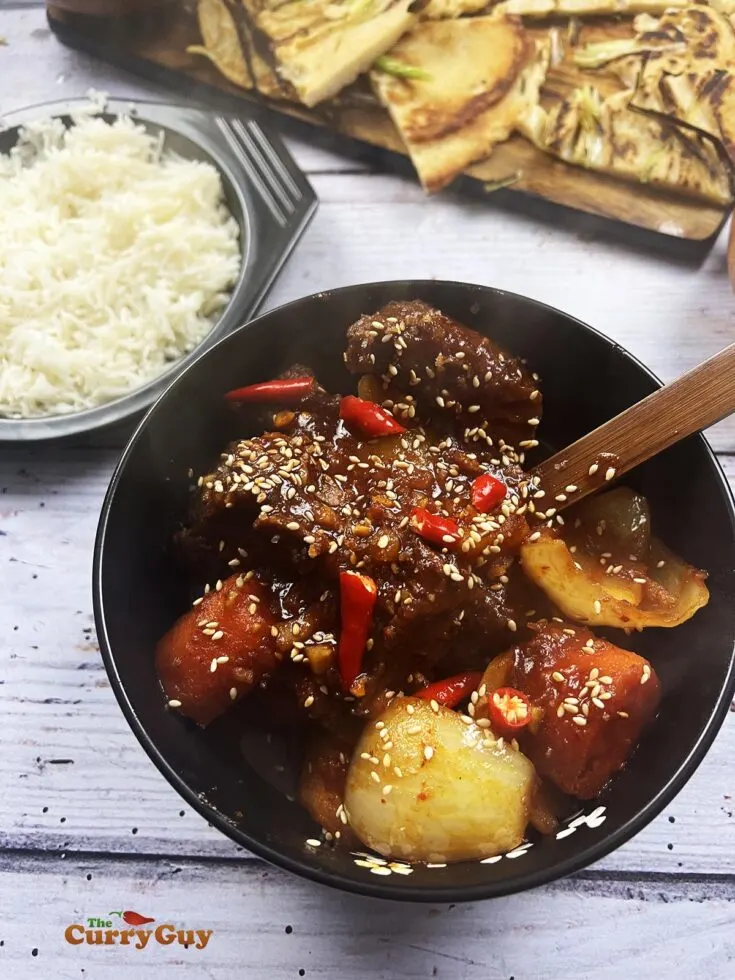
Ingredients
- 1.5kg (3 lbs) beef short ribs, cut into 5cm (2 inch) pieces
- ½ tsp salt
- 1 litre (4 cups) approx. unsalted beef stock or water
- 175ml (3/4 cup) light soy sauce or tamari (gluten free)
- 125ml (1/2 cup) Chinese cooking wine or dry sherry
- 4 tbsp honey
- 2 tbsp gochujang
- 2 – 4 tbsp gochugaru
- 2 tbsp sesame oil
- 15 cloves garlic, minced
- 1 x 5cm (2 inch) ginger, minced
- 2 large carrots, cut into 2.5cm (1 inch) chunks
- 2 large potato, cut into large bite sized pieces
- 5 red bird’s eye chillies, cut at an angle in half, seeds removed for less heat
- 12 spring onions (scallions), sliced lengthwise down the centre
- 2 medium onions, quartered and divided into petals
- 4 tbsp toasted or untoasted sesame seeds
- Salt and pepper to taste
Instructions
- Bring a pot of water to a boil over high heat and add the short ribs. Bring back to a boil and simmer for 10 minutes, skimming any impurities that rise to the top. After 10 minutes of boiling, strain the meat into a colander and rinse it with cold water. Wipe your pot clean and then wash each piece of meat to remove any blood or other impurities and return them to the pot.
- Pour the soy sauce and Chinese rice wine/sherry over the meat and then add just enough water or unsalted beef stock to cover and bring to a rolling simmer over high heat. Stir in the honey, gochujang and gochugaru. If you are not sure about the spiciness, add less of the gochujang and gochugaru. You can always add more later to taste if needed.
- Simmer, covered over high heat 30 minutes and then uncover and continue simmering over a medium heat for an additional 30 minutes or until the meat is fall off the bone tender.
- To finish, stir in the chopped garlic, ginger, carrots and potatoes. If needed, you can add a drop more water if it is looking too dry. Continue simmering over a medium heat until the carrots and potatoes are cooked through.
- Stir in the spring onions (scallions) and onion petals and let them cook in the hot sauce for about a minute. Your braised beef ribs are ready when everything is cooked through and you have a thick but still liquidy sauce. Season with salt if needed and freshly ground pepper to taste.
- To serve, divide between 6 bowls and garnish with the sesame seeds and more thinly sliced spring onions (scallions) and red chillies.
Recommended Products
As an Amazon Associate and member of other affiliate programs, I earn from qualifying purchases.
Nutrition Information:
Yield:
6Serving Size:
1Amount Per Serving: Calories: 342Total Fat: 11gSaturated Fat: 3gTrans Fat: 0gUnsaturated Fat: 8gCholesterol: 14mgSodium: 1004mgCarbohydrates: 50gFiber: 5gSugar: 19gProtein: 10g



